How to grow Dicksonia
There are approximately 25 species of this ancient fern (said to be one of the oldest plants in the world), originating from sheltered forests throughout temperate and tropical regions in Southeast Asia, Australasia, and South America. Most produce an upright, trunk-like structure, though a small number are creeping in habit. By far the most commonly grown in the UK is Dicksonia antarctica, also known as the soft tree fern. You may also occasionally come across D. fibrosa and D. squarossa, though these are less hardy than D. antarctica so tend to be found in particularly mild microclimates or specialist gardens.
The ’trunk’ of dicksonia is actually an erect rhizome covered in a thick mass of roots. In the right conditions this can reach up to 6m in height, though our UK climate it tends to remain considerably shorter – here 4m is considered tall. From the crown at the top emerge large fronds each capable of reaching a couple of metres in length. In their natural habitat, many dicksonia species remain evergreen, though again, they behave slightly differently in the UK where they tend to drop their fronds.
Dicksonia is prized by gardeners and designers as a dramatic statement plant. Many feel its unique appearance is worth going the extra mile for when it comes to ongoing care.
Please always buy dicksonia from a reputable source, as sadly there is an established illegal trade dealing in plants harvested from threatened forests.
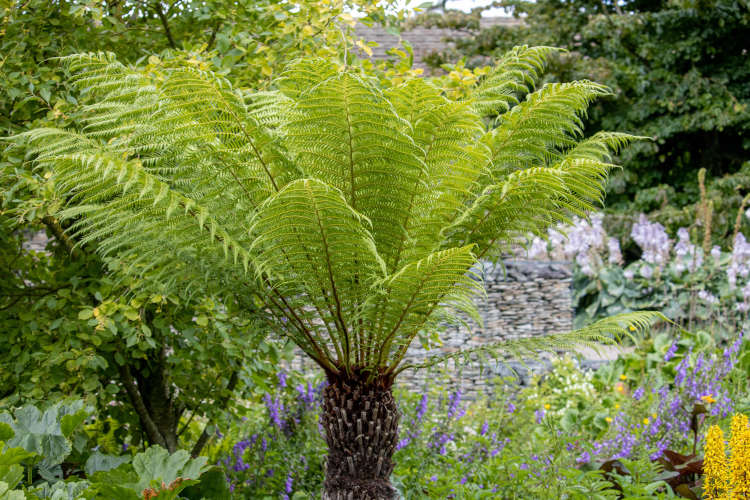
Key Information
Position
Soil Conditions
Hardiness

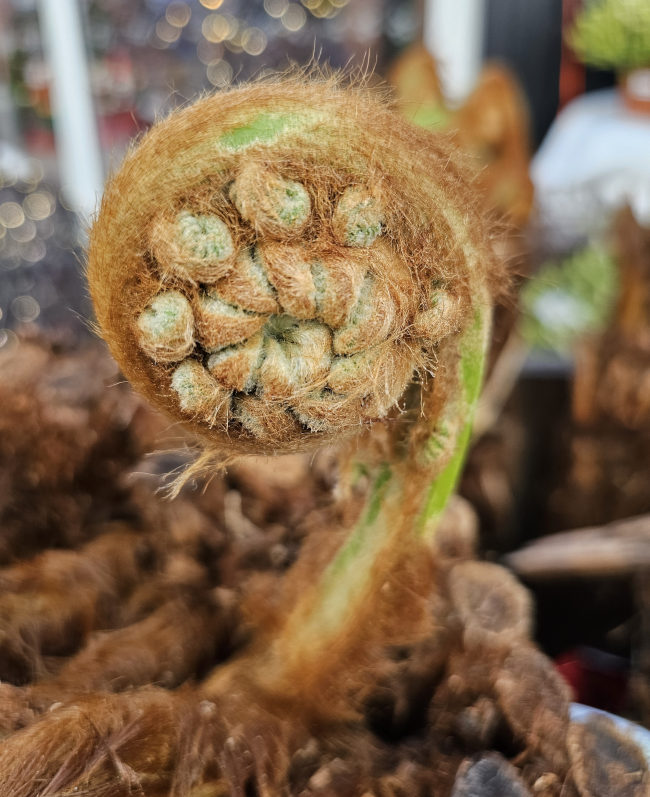
Where & when to plant Dicksonia
Dicksonia is an unusual plant in that it is commonly sold as a rather dead-looking ‘log’. This is because the roots can be found all over the ‘trunk’, so the most cost-effective approach is for growers to simply chop it off at ground level rather than include a heavy rootball. You may also find it available as a pot-grown plant.
At Hayloft we offer dicksonia both in log form and as a small, pot-grown plant.
For best results, plant dicksonia in spring once all risk of frost has passed. This can vary from region to region though tends to be around mid-May. Planting can also be carried out in summer, though you will need to take an extremely watchful approach to watering. An autumn planting can also work in milder regions.
Plant your dicksonia in a sheltered, partially shaded spot such as in a woodland garden or urban courtyard. Boggy conditions near a pond or water feature also work well. Dicksonia can make a good container plant, providing you can offer it a large enough container. Be aware that it is likely to remain a smaller size if grown in this way.
Planting/ potting is best done in spring once all risk of frost has passed in your area (usually mid to late May). It is also possible to do this in summer, though be prepared to water regularly.
Position- In reliably damp areas, dicksonia will grow in full sun. Everywhere else it is best to go for a partially shaded spot. Always choose as sheltered a location as possible – the aim is to prevent this moisture-lover from drying out as much as you can.
Soil- Humus-rich, moist, acidic to neutral soil
Hardiness- Half-hardy, H3, 1°C to -5°C
Though anecdotally, D. antarctica is said to be hardier than this and has been known to withstand as low as -10°C.
How to plant Dicksonia
- For planting in the ground, dig the soil area removing any large stones and weeds and breaking up any lumps. Mix in some organic matter such as manure or garden compost (this is especially important if you’re on light soil, as dicksonia hates to dry out). If your soil is heavy, now is also the time to add a generous helping of horticultural grit. Rake level and firm with your heels. Rake level again.
- Log: Hose down the trunk of your dicksonia before planting. Pot-grown: give the trunk and rootball a good soaking before planting.
- Log: dig a hole approximately 10cm deep and a little wider than the trunk of your dicksonia. Pot-grown: dig a hole twice the size of the rootball.
- Log: place the trunk in the hole at a depth of around 10cm. Pot-grown: place the plant in the hole, ensuring the top of the rootball sits level with the surface of the soil. Too low and the plant may rot, too high and the roots can dry out.
- Backfill with soil and firm in gently with your foot.
- Soak well with water.
- Mulch around the base with well-rotted organic matter.
- For planting in containers, first choose an appropriately sized pot, as deep as you can. Ensure there are plenty of drainage holes in the bottom.
- If you are using a large or heavy pot, it can be a good idea to fill and plant it in situ to save yourself the trouble of moving once full.
- Use a good quality potting compost with plenty of horticultural grit mixed in, and, if not already present in the compost (check the description on the bag) some slow-release fertiliser granules.
- Start by partially filling the pot with compost.
- Log: place the trunk in the pot at a depth of around 13cm. Infill the surrounding space with compost, ensuring there is a gap of around 3cm between the surface of the compost and the top of the container. Firm down with your fingers then add a little more so the plant is held tight.
- Pot-grown: place the plant in the hole, ensuring there is a gap of around 3cm between the surface of the rootball and the top of the container (this is to allow for effective watering). Infill the surrounding space with compost. Firm down with your fingers then add a little more so the plant is held tight.
- Pick up the pot (if you can!) and lightly tap on the potting bench or ground a few times to help further settle the compost around the plant.
- Soak well with water.
- A mulch with horticultural grit will look attractive and help to prevent a ‘cap’ or crust forming on the top of the compost (something container plants can suffer due to the artificial nature of their watering).
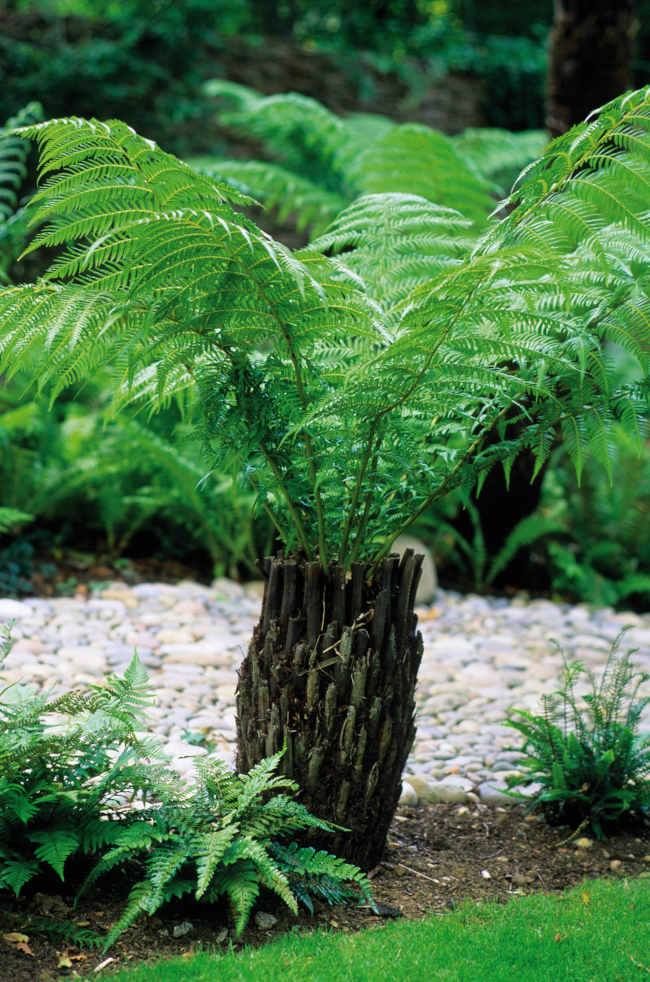
What to plant with Dicksonia
Try combining dicksonia with a variety of other moist shade lovers for a lush, jungle-like foliage display. Think along the lines of ferns such as adiantum, blechnum, and dryopteris, along with hostas, gunnera, asarum, rodgersia, and – one of our favourite secret-weapons for these conditions – luzula.
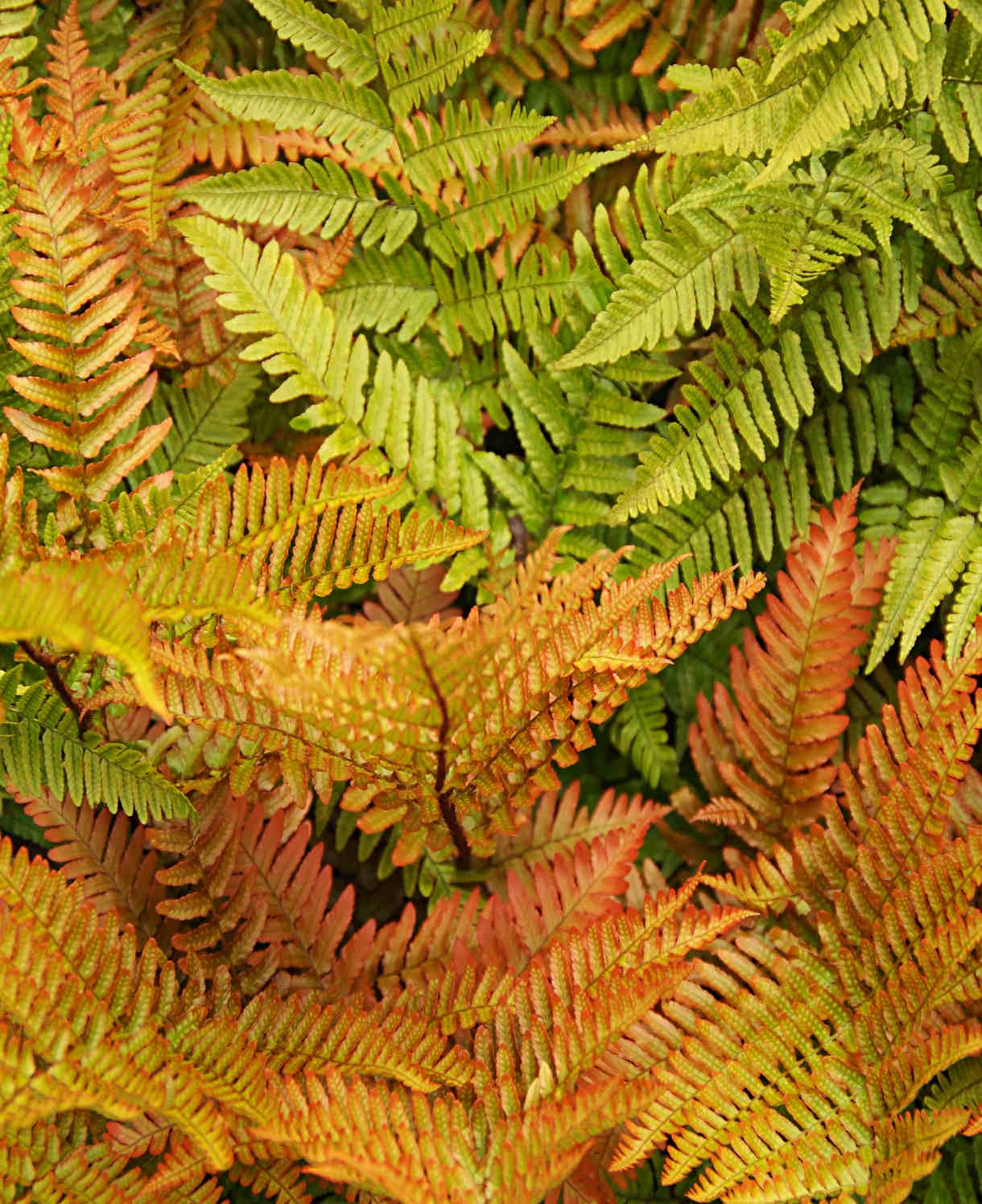
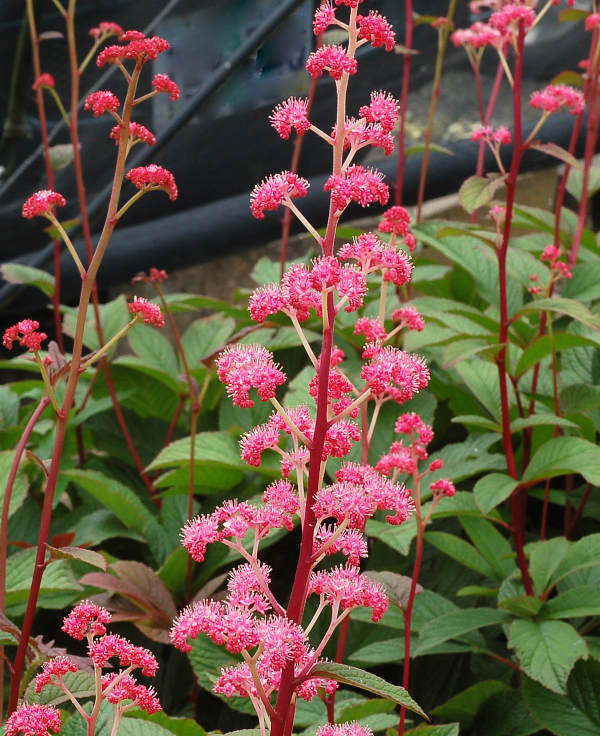
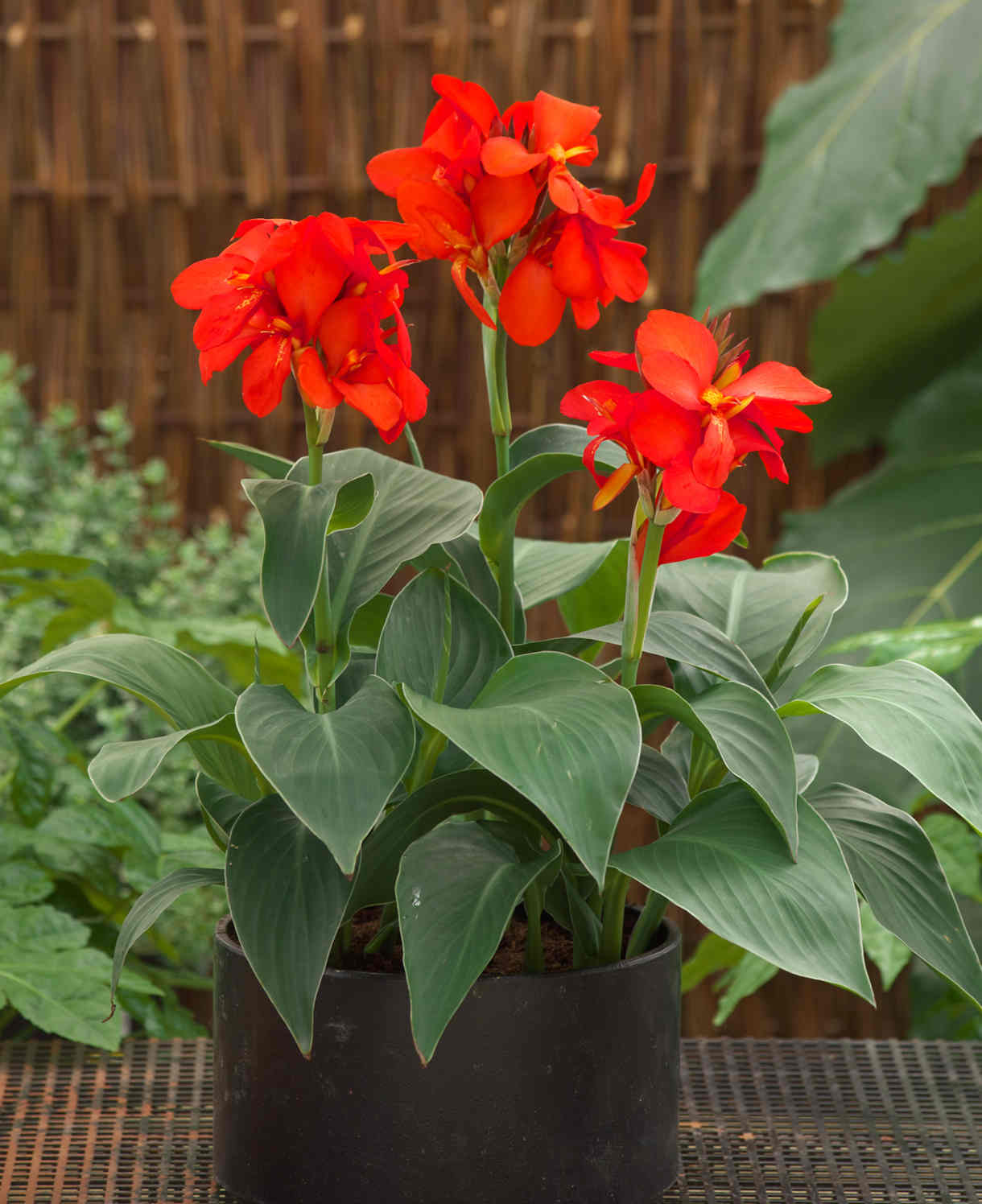
How to care for Dicksonia
Pruning and Deadheading
Throughout the growing season, older fronds may die back and hang down around the trunk. If you can bear it, leaving these in place acts as a useful barrier for retaining moisture around the aerial roots of the stem. If your dicksonia has pride of place, however, you may find these too unsightly and be compelled to remove them. Compensate with a thick mulch and extra watering (see next section).
Fronds can be left intact for use as winter insulation on the crown (see ‘Cold Protection’). Cut back when unwrapping in spring, making sure to leave approximately 15cm. These stubs play an important role in stabilising the trunk as it grows.
Watering
Dicksonia should be watered with a hose every day throughout its first growing season in the ground, ensuring the crown (growing point), trunk, and soil are kept consistently moist. In subsequent years, watering on a weekly basis throughout growing season will suffice, though in hot, dry weather you may need to increase this back up to every day.
Container-grown dicksonia has less access to moisture, so expect to have to water these more than those in the ground.
Feeding
Dicksonias are heavy feeders, particularly larger specimens. For best results, give them an annual mulch in spring plus a weekly does of specialist tree fern feed throughout the growing season. The mulch can be any well-rotted organic matter (i.e., a layer of manure or garden compost applied to the soil around the plant), which, as well as adding nutrients, has the added benefit of suppressing weeds and locking in moisture. Make sure you leave a small gap between the mulch and the base of the trunk, to avoid rotting.
For an extra boost (perhaps your dicksonia is looking stressed, or you garden on poor soil), applying an general purpose granular feed to the surface of the soil and lightly working in (known as a ‘top dress’) can reap benefits. Aim to do this once or twice a year if needed.
Container-grown plants rely more on the gardener for their nutritional needs. Get off to a flying start by making sure you use a good quality potting compost, then throughout the growing season (March to September) apply a specialist tree fern feed at weekly intervals.
Cold Protection
Unless you garden in a mild microclimate (such as in the Gulf stream, or a protected urban courtyard), your dicksonia will need a little help to get through the winter. The most important part to protect is the crown, where next year’s unfurled fronds lie in wait. Pack with straw, bracken, dry leaves, or shredded paper, before encasing the lot with this year’s fronds tied up in an upright bunch. Use horticultural fleece or hessian to wrap round the top half of the trunk and the crown, securing with string. Pack any little gaps with more straw/ bracken/ dry leaves/ shredded paper and tie again. Add a thick mulch to protect roots.
Container-grown dicksonia should be given the same treatment, as well as the container itself being wrapped up in horticultural fleece or bubblewrap. Alternatively, move to a frost-free environment such as a greenhouse or conservatory.
Remove protection in March as the new fronds begin to unfurl.
Pests and Diseases
Dicksonia tends to be problem free.
How to propagate Dicksonia
Like all ferns, dicksonia can be propagated by spores. However, it takes such a long time to reach maturity this is not a viable endeavour for most gardeners.
A neat ‘cheat’ if you have suffered a winter loss, is to plant a much smaller dicksonia in the crown of the dead specimen. It will root easily and give the appearance of being the same plant.
Common Dicksonia questions
- What helps tree ferns grow?
In a word – water! We’ve all seen those sad, spindly specimens with narrowing ‘trunks’ – a telltale sign of thirstiness. Keep your dicksonia well-watered, fed regularly, and protected from the winter, and it should reward you with a lustrous show of health and vitality. - How fast do dicksonia tree ferns grow?
Dicksonia is a very slow-growing plant and can take from 20 to 50 years to reach full maturity. - Where does dicksonia grow?
The most popular species, D. antarctica, comes from forests in Eastern Australia.




